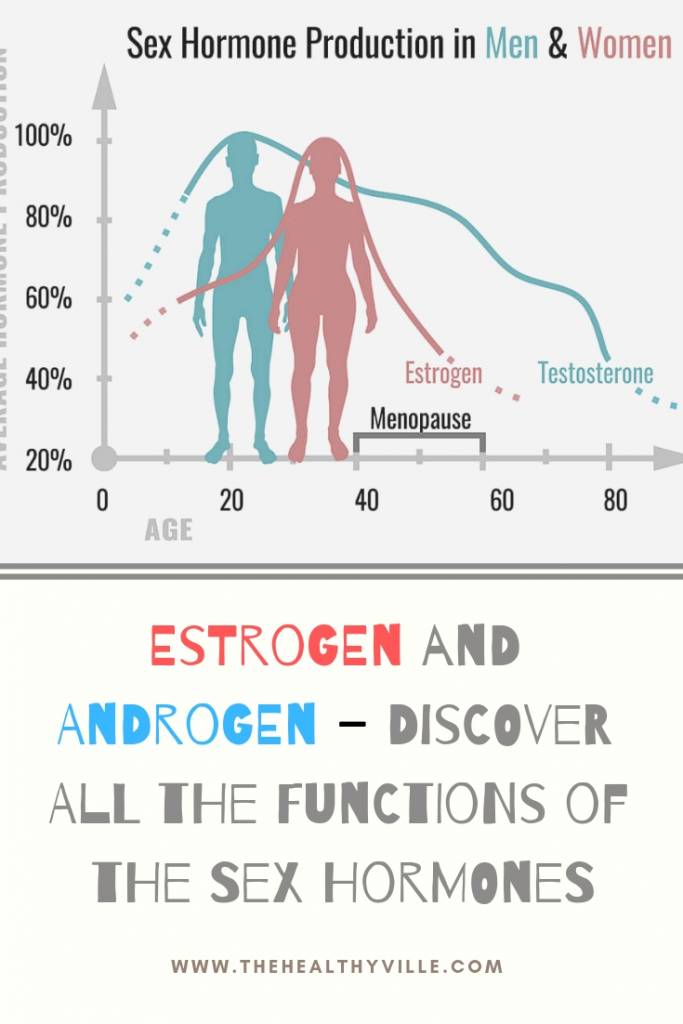In addition to controlling the development of secondary characters, estrogen and androgen sex hormones participate in multiple functions of the body, such as bone growth or the production of blood cells.
Sex hormones are chemical substances that synthesize in the sexual organs. In the ovary, in the case of the woman, or in the testicles, in the case of man.
Its synthesis is directly conditioned by the action of another hormone: GnRG in the pituitary gland, which, in turn, secretes gonadotropins. These are, finally, responsible for stimulating both the testicle and the ovary.
The precursor of sex hormones is cholesterol, which differs in female and male sex hormones. These hormones can be synthesized in order to improve the quality of life in patients with pathologies such as breast and prostate cancer or fertility and uterine dynamics.
Within the female sex hormones we find estrogens and prostans, both synthesized in the ovaries. As for the masculine ones, we find the androgens, synthesized in the testicles. But generally, when we talk about sex hormones, we think of estrogen and androgen.
Sex Hormones – Estrogen and Androgen
Female sex hormones: Estrogens
Estrogens maintain the ovarian cycle, but can exert actions in other systems such as bone tissue.
Estrogens are responsible for the differentiation of female secondary characters. They are also responsible for controlling the menstrual cycle and promote bone growth in women.
When they are secreted, the synthesis of the progesterone receptors in the uterus increases. This will favor a series of actions that we will explain later.
Estrogens also have metabolic and cardiovascular actions, since they retain sodium, salt and water. The retention of sodium has consequences in menopausal women since, having a resorptive capacity, they favor the loss of bone mass. Therefore, many women must undergo hormone treatment.
When a person undergoes a treatment of high doses of estrogen these sex hormones act as contraceptives, in addition to:
Decrease glucose tolerance
To favor the synthesis of coagulation and plasminogen factors and decrease the synthesis of prothrombin III. So the thrombotic risk increases.
Increase the synthesis of renin and angiotensin and promote the release of aldosterone. These people should have controlled blood pressure, as there may be changes in their value.
Prostagens or progestins
The decrease in progesterone causes the appearance of menstruation in the cycle of women.
As we mentioned before, the release of estrogen immediately causes the number of progesterone receptors to increase, which favors the interaction between the two.
When progesterone binds to its receptors, the direct consequence is that it decreases the number of junctions between estrogen and its receptors. This factor is good, since progesterone prevents endometrial hyperplasia.
As we have said, estrogens are the sex hormones responsible for controlling female secondary characters, such as the uterus. Therefore, if estrogens maintain their activity or are increased, this disease can develop.
In this way, the progestins transform the estrogen-endometrium into a secretory endometrium.
On the other hand, progesterone is the sex hormone that prepares the uterus for a pregnancy. Thus, when the levels of this decrease menstruation appears. It also favors the synthesis of milk in the breasts.
Unlike estrogen, this hormone blocks aldosterone receptors. And in addition, during the ovulation the body temperature increases 0,5 ºC.
Male sex hormones: Androgens
Male hormones promote the growth of the male sex organs and muscle mass.
Androgens have masculinizing actions. They favor the development of the male genitalia and that of the secondary characters. On the other hand, synthetic androgens can be used in diseases such as:
- Male hypogonadism.
- Anemia. Increase the synthesis of erythropoietin in the kidney by its anabolic action.
- Anorexy.
The anabolic action is due to the increase in protein synthesis, which increases muscle mass.
In short, among the functions of this sex hormone we can find the stimulation of spermatogenesis in the seminiferous tubules. In addition, it favors the maturation of the spermatid in the spermatozoon.
It also promotes the growth of the penis, scrotum and sexual secretory glands, as well as that of the testicles. Finally, it increases hair growth and libido, that is, sexual desire.
Don’t forget to SHARE all estrogen and androgen functions with your friends and family on your social networks!

